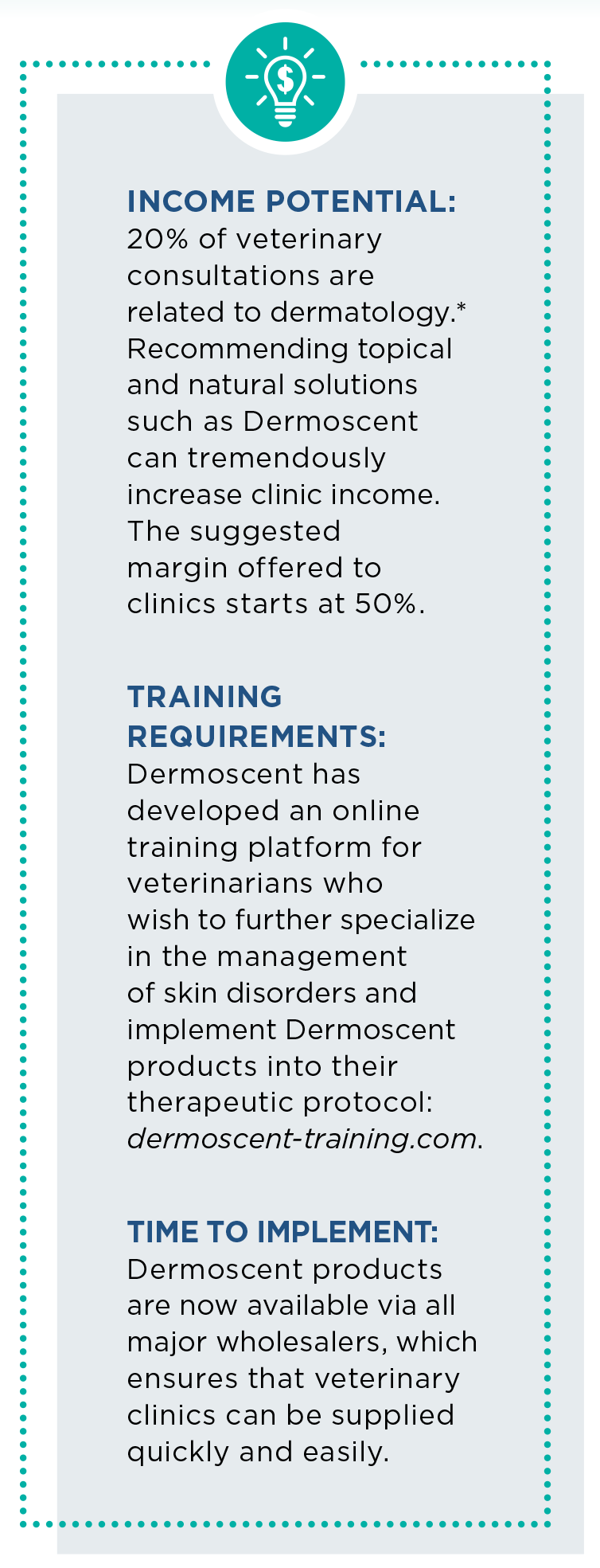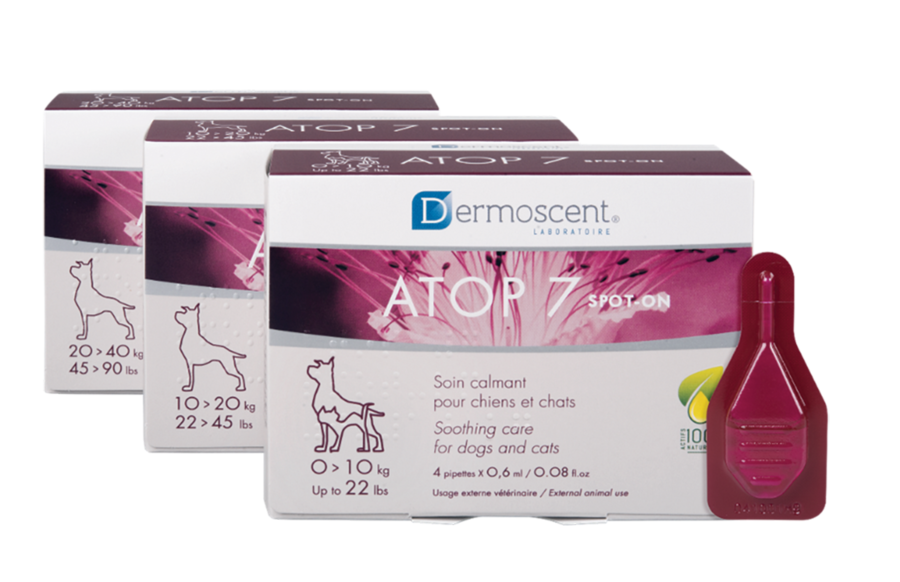WHY IT MAKES SENSE FOR YOUR PRACTICE
Most practices see a substantial number of dermatological cases. Dermoscent’s comprehensive range of high quality dermo-care products meet a unique set of criteria:
- Natural ingredients — to meet the high demand from pet parents.
- Scientifically-proven efficacy — the effectiveness and tolerance of the products are proven with numerous studies conducted by renowned dermatologists worldwide, and published in peer-reviewed journals.
- Improved compliance — the availability of different galenic forms (spot-ons, rinse-free foams, shampoos, etc.) promotes compliance by pet owners, a key success factor in the management of chronic ailments.
In addition to medication during acute phases, skin barrier repair products help achieve a sparing effect, which is important, considering the side effects of longterm or inappropriate use of some chemical molecules. In the maintenance phase, Dermoscent products help reduce relapses for the well-being of your patients and satisfaction of pet parents.
 PROFITABLE PRODUCTS
PROFITABLE PRODUCTS
Dermoscent has formulated a number of unique products to help manage the following ailments:
Pruritic/allergic/atopic skin: the ATOP 7® range helps soothe and repair the sensitive skin of dogs and cats.
Skin prone to microbial imbalances (pyoderma, Malassezia dermatitis): the PYO range helps purify and rebalances the skin flora of dogs and cats.
Recurrent otitis externa: PYOclean® Oto is a purifying ear cleanser based on antimicrobial and antibiofilm natural ingredients designed for dogs, cats and small mammals.
Kerato-seborrheic disorders (dandruff, bad odor, greasy skin and coat, excessive hair loss, sebaceous adenitis, ichthyosis, etc.): The Essential range hydrates and helps regulate skin and coat condition of dogs, cats and small mammals.
Hyperkeratosis and non-infected calluses: Dermoscent BIO BALM® nourishes, protects and helps repair and soothe nose, pads and non-infected calluses of dogs.
* Hills et al. Survey of the prevalence, diagnosis and treatment of dermatological conditions in small animals in general practice. Vet Record 2006







